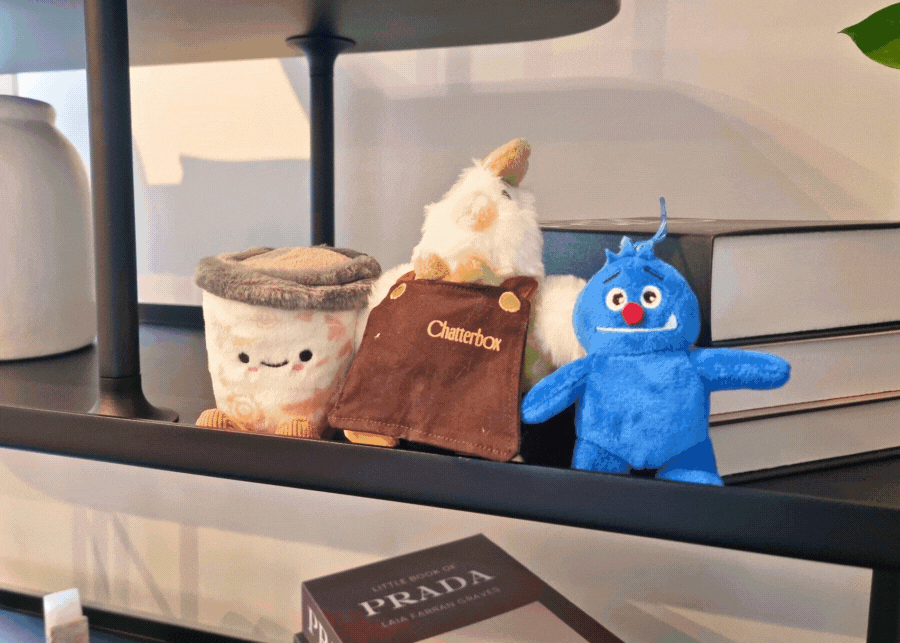
Milo in Singapore has fueled us for decades — I went inside Nestlé’s R&D centre to see how it’s made and why it became a national obsession, from iconic vans to collabs and beyond.
Nothing says childhood in Singapore more than Milo. I still remember racing to the Milo van after sports day, clutching that tiny paper cup as if it were liquid gold. These days, it’s a cold packet instead of a hot cup, but the comfort hits the same. That first creamy sip – malty, sweet, and energising – always feels like a small victory. For 75 years, Milo hasn’t just been a drink; it’s a ritual, a reward, a constant companion, and a national love language. (Just think of the craze for Milo’s plush toys in Singapore!)
Growing up, Milo was simply part of life. But the more I sipped, the more I began to wonder: how did this chocolatey drink become Singapore’s unofficial national beverage? I even got to peek behind the scenes at Nestlé’s R&D Centre in Jurong – and trust me, watching Milo being made is a nostalgia trip of its own.
How Milo found its home in Singapore
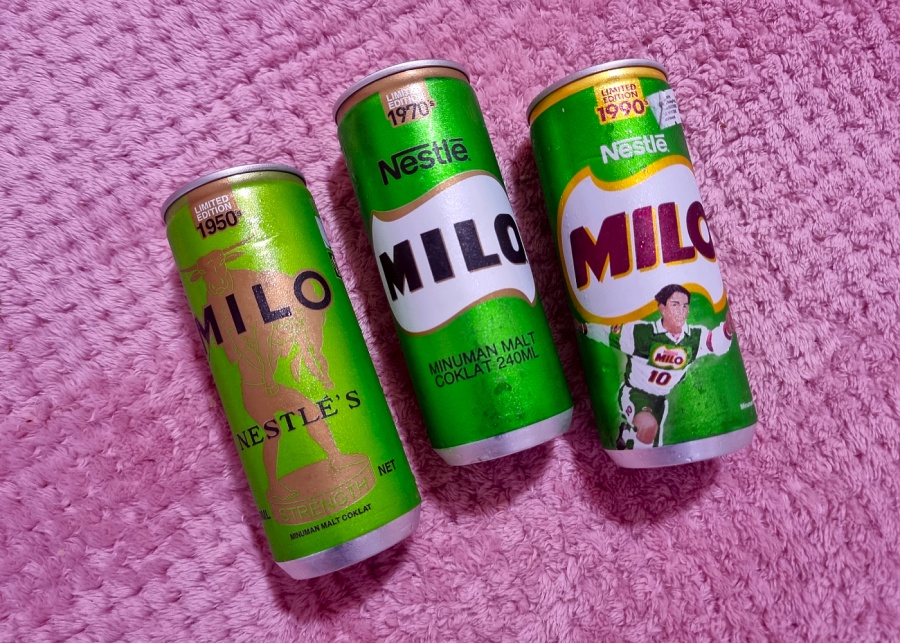
Milo arrived here in the 1950s, introduced from Australia as a fortified cocoa drink made with milk and malted barley. Post-war Singapore needed affordable, nutritious foods to keep families going, and Milo’s promise of energy and sustenance quickly struck a chord.
Decades later, I had the chance to visit the Nestlé Singapore Research and Development Centre in Jurong to see how Milo is made. Watching the process unfold was like tracing childhood memories back to their source: barley roasting until nutty, cocoa tumbling in, and that familiar malty fragrance filling the air. The mixture begins thick and gooey – like brownie batter at its most decadent – before being baked into delicate, wafer-thin crisps that resemble meringues. Who knew the iconic drink began life looking like a dainty French dessert?

But it wasn’t just the taste that captured hearts. The Milo Soccer Boy, printed proudly on every tin, became a childhood icon. Hands up if you remember him! His sporty swagger embodied strength and vitality so perfectly that Milo even picked up a local nickname: Tak Kiu, Hokkien for “kick the ball.”
By the 1970s and ’80s, Milo had become inseparable from school life through sponsorships and, of course, the Milo van, which cemented its place as the post-PE, sports day, anytime-you-needed-a-pick-me-up drink.
Fast forward to the 2000s: as Singaporeans grew more health-conscious, Milo rolled out lower-sugar options. Yet the core formula — the one generations of us grew up with — remains unchanged. If you’ve been drinking Milo throughout the decades, we bet you can’t tell the difference between that first sip during your growing-up years and the one you had this morning.
Why does our Milo taste different?
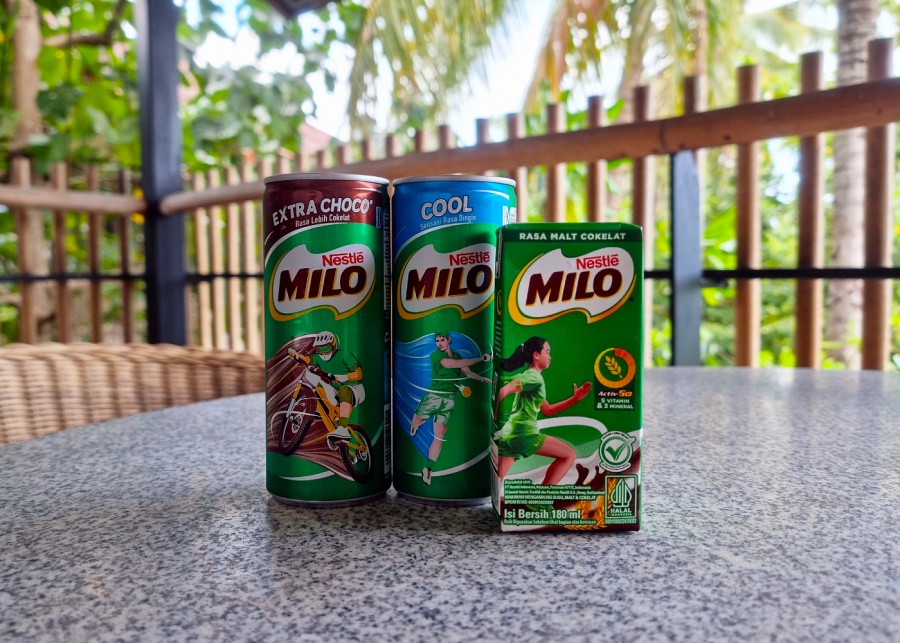
I’ve always wondered what makes our Milo different from its overseas counterparts. According to the Nestlé Singapore team, the formula has been tweaked to suit local palates – sweeter and maltier than its Australian cousin, creamier than the Malaysian version. It’s the same green tin, but a taste fine-tuned to the buds that grew up with it.
That checks out, because I’ve always felt the Malaysian version is a little thinner, while the Milo I had on a trip to Indonesia tasted almost dessert-level sweet. And here’s a fun fact: if you’re curious, you don’t even have to travel to compare. Just flip the tin or packet over! The country of manufacture gives the game away, and yes, you can find overseas variants in Singapore’s supermarkets.
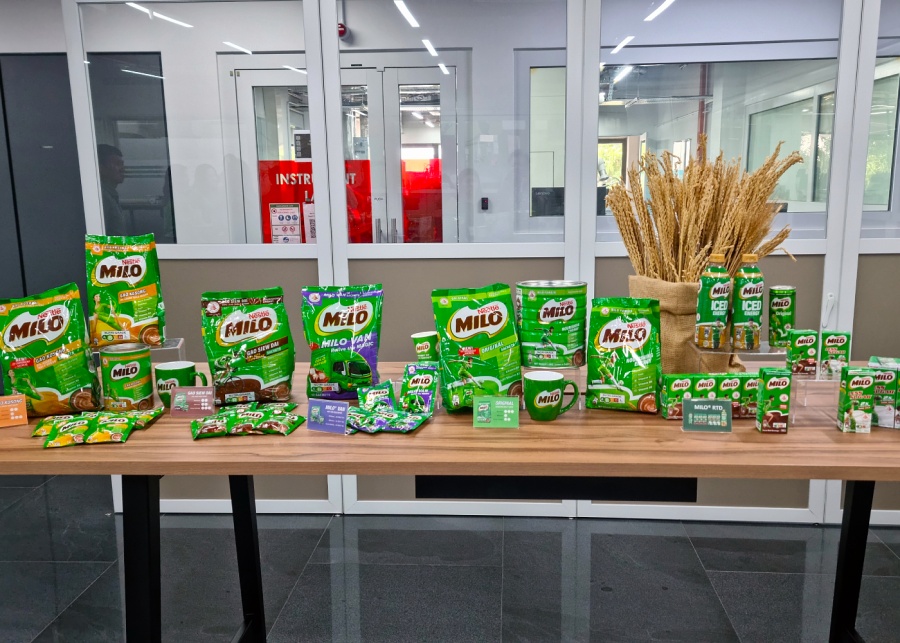
Fans can also choose from four local Milo versions on the shelves here. If the original’s gotten too sweet for your taste buds (growing old, are we?), the Milo Gao Siew Dai might just hit the spot. It contains 50% less sugar but with a more robust, malty-cocoa flavour. I’ve tasted this version and, just like the final bed Goldilocks lay on, it’s just right. There’s also the Milo Gao Kosong version if you’re looking to cut sugar out completely.
The latest variant to hit the shelves? It’s the one Singaporeans have been manifesting for years – Milo van! And we finally scored it.
All aboard the Milo van

If there’s one thing that cements Milo as Singapore’s unofficial national drink, it’s the Milo van. Ask anyone who grew up here, and watch their eyes light up instantly. Those iconic green trucks would roll into schools, sports meets, and public events like rock stars, serving up icy-cold Milo in little paper cups. Never mind that it was gone in three gulps – that first sip was pure bliss, malty and frosty, a reward that made running under the blazing sun almost worth it.
So what makes the Milo van so coveted among the masses? Joy Lee, Milo’s senior brand manager, opines that it’s the constant shaking and bumping along the journey that gives the drink its silky texture. Cute theory, but science aside, we all know it just hits different.
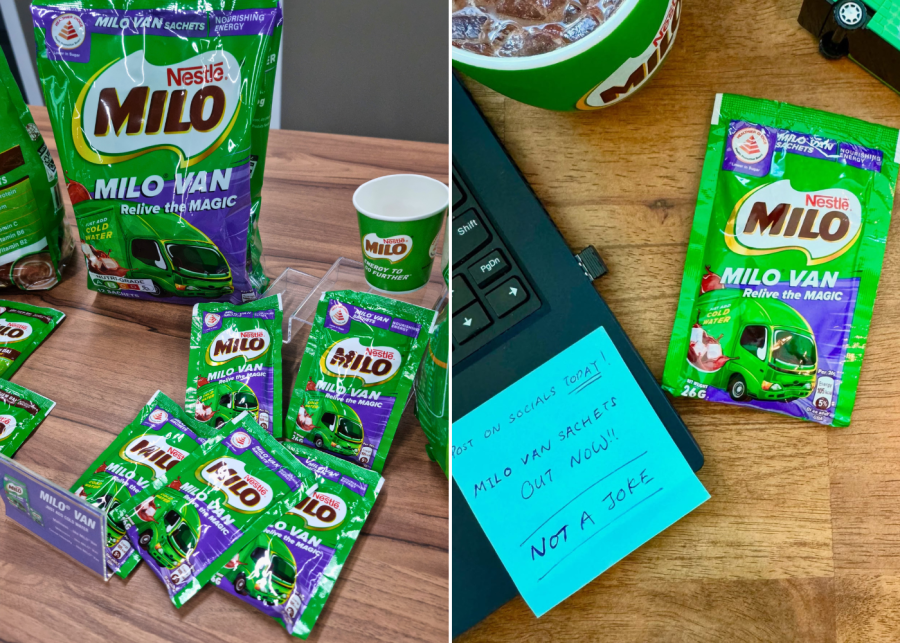
The best part? You don’t have to wait for the green truck anymore. As part of Milo’s 75th anniversary, Nestlé Singapore has dropped Milo van sachets so you can DIY the experience at home! Just tear, pour, add cold water, and shake it like you’re auditioning for a Zumba class until it’s frothy. Instant nostalgia, no sweaty PE lesson required.
I tried it at the R&D centre and swear the first sip unlocked a core memory. Cold, chocolatey, refreshing – it’s basically a return to childhood, minus the teacher yelling at you to run faster.
Beyond the tin: Milo in the wild
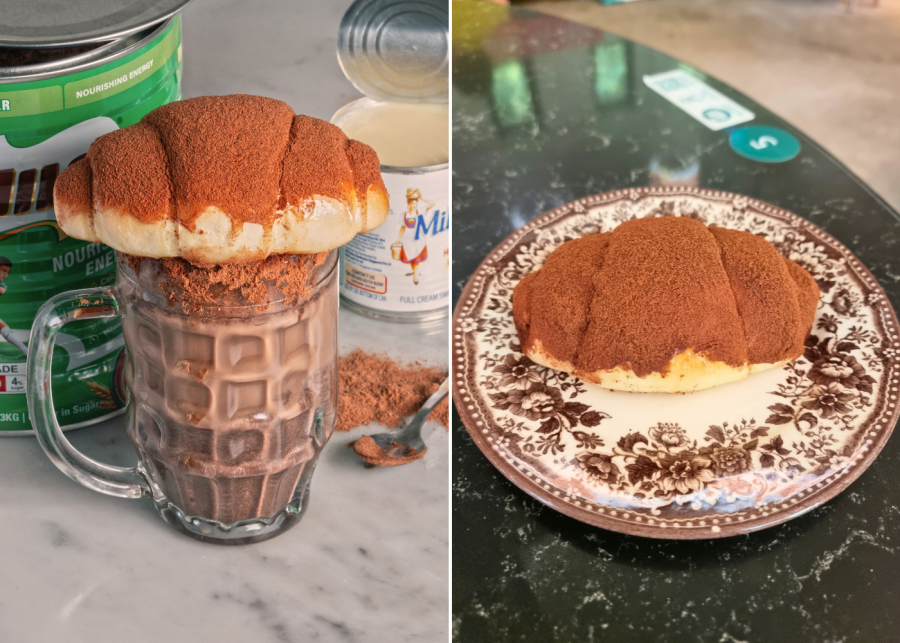
Milo has been loved by generations in Singapore, growing from a nourishing beverage into a full-blown lifestyle icon. It all started in the ’90s, when Indian-Muslim eateries along Upper Bukit Timah Road whipped up the legendary Milo Dinosaur. Today, the brand pops up in the most unexpected places. Chocolate nuggets and cookies, snack bars, bakeries, merch – if you can think of a platform, Milo probably has a presence there.
Take Tiong Bahru Bakery, for example. As part of its SG60 offerings, the bakery introduced the Milo Dinosaur shio pan, which proved so popular that it’s now a permanent menu item. (I’ve tasted it – and I’m thrilled it’s sticking around!) Milo-centric creations also appear on the menus of Mr Coconut, Munchi Pancakes, Warabimochi Kamakura, Mister Donut, and more, proving that Singaporeans will follow that malty chocolate wherever it goes. And honestly, who can blame them?
When I asked the Nestlé Singapore team if these collaborations are part of a bigger strategy, they said: “[These collaborations] are often born out of Singaporeans’ love for Milo.”
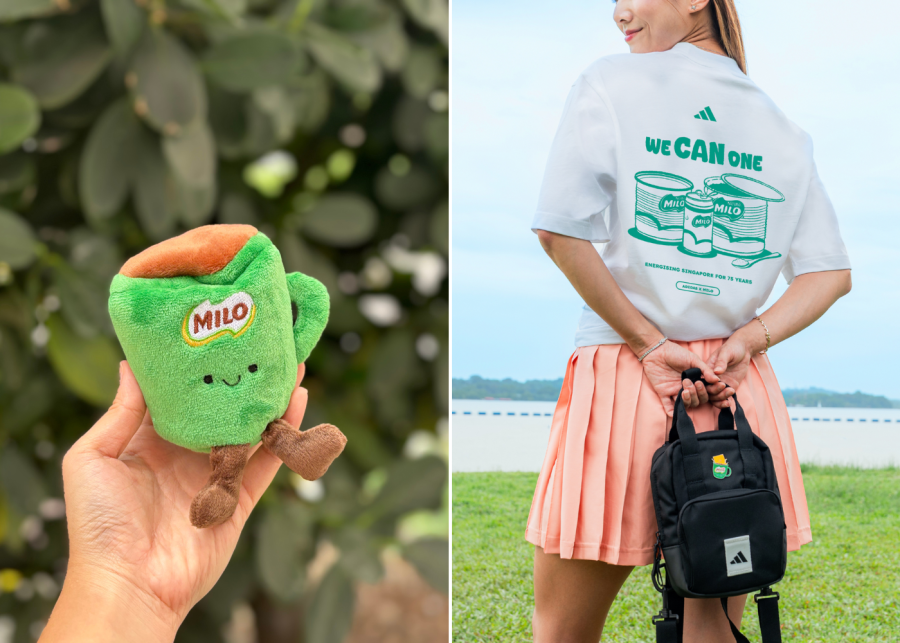
And it’s not just edible: Milo has brought nostalgia to life with breakfast and breaktime plushie sets, letting fans hug, squish, and show off their love for the brand. The recent restock (and introduction of a “new friend”) had fans clamouring to get theirs, often selling out faster than I can say, “Excuse me, do you still have the plush toys?”
Meanwhile, Milo’s recent collab with Adidas in August shows the brand can leap from paper cups to streetwear, proving that green tins leave footprints far beyond the kitchen. “The collection is a celebration of Milo and Adidas’ shared values and a testament to our dedication to inspiring the next generation of athletes and leaders,” the Nestlé Singapore team tells me.
What’s next for Milo in Singapore?
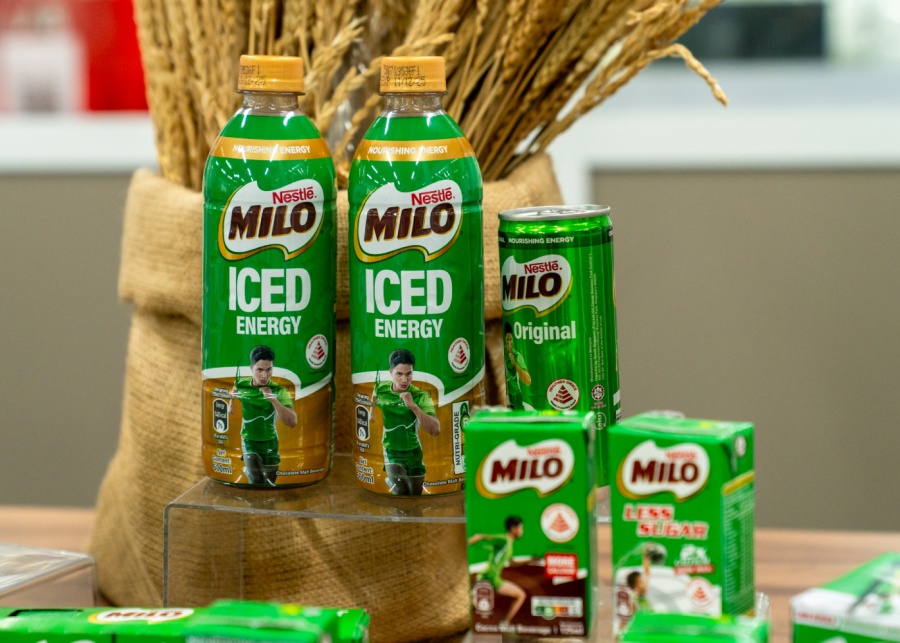
From cafes and plushies to streetwear and beyond, Milo has proven it can show up just about anywhere in Singapore. But the story doesn’t stop here. If the last 75 years are anything to go by, Milo isn’t going anywhere – in fact, the next chapter’s probably brewing as we speak.
My prediction? Expect more variants, such as a non-dairy option. I wouldn’t be surprised to see Milo popping up in more unpredictable places and iterations, like egg waffles, pizzas, milkshakes, or even skincare (malt glow serum, anyone? SPF not included). And who knows… maybe in 2099, we’ll be sipping Milo Galaxy in holographic cups at an AR Milo van pop-up.
For now, I’ll take my Milo like I always have: cold and sweet enough to capture the best bits of growing up.
